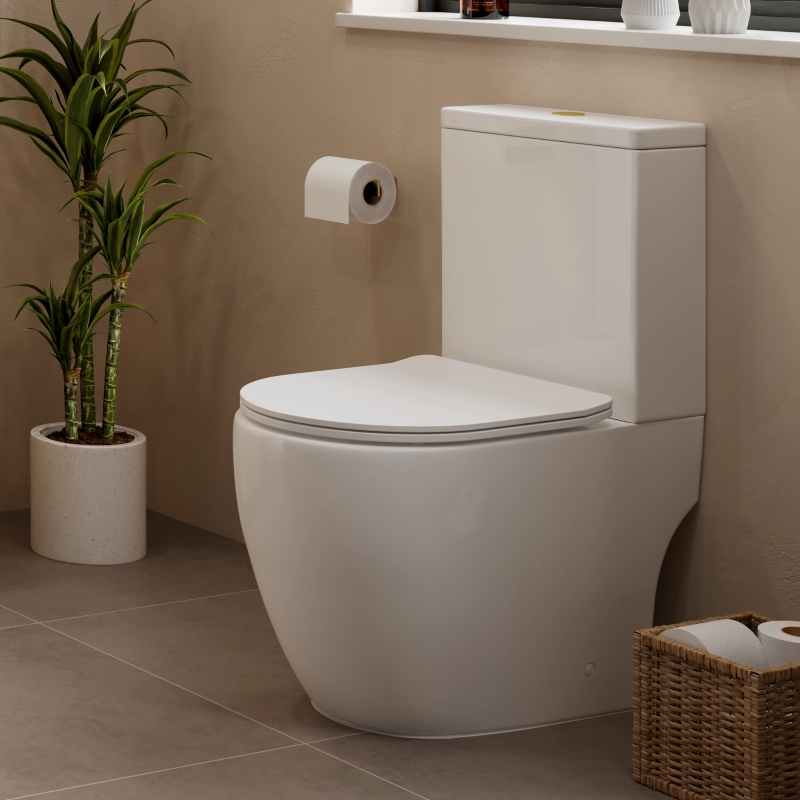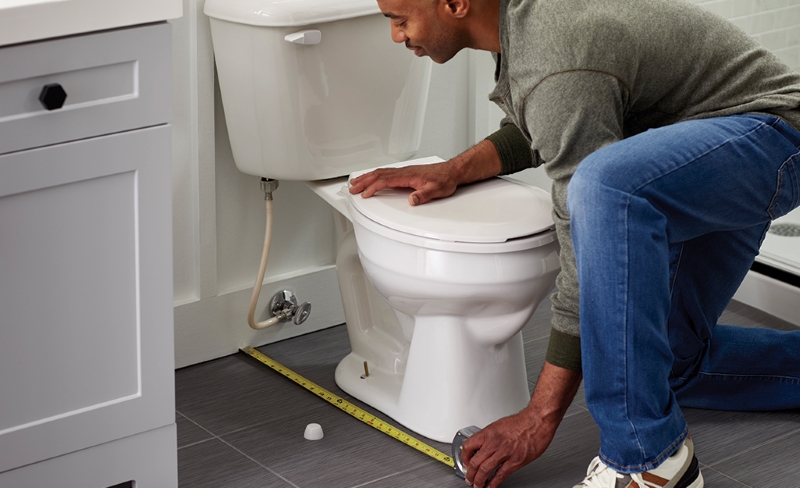Thinking about remodelling your bathroom? Maybe you're building it from scratch and are searching for the big and essential pieces such as tubs and toilets. Speaking of the latter, it's the most important thing for a bathroom, so choosing the right one is essential.
Choosing a toilet may seem simple, there are a few factors to keep in mind, such as size, plumbing, and of course, the design.
Styles of Toilets
When you're buying a toilet, it's essential to choose a style that's suitable for your bathroom vibe. There are a bunch of options like concealed, wall-faced, and connector toilets, among others. Just remember, while style matters, it shouldn't mess with the plumbing setup.
Connector
You'll recognize the connector, or "link suite," by the cistern and pan connected by a flush pipe (they're hidden behind a plastic plate). This design is more flexible because you can adjust the pan's position to fit your space better.
Close-coupled
Close-coupled toilets are super popular, especially for those mid-range bathroom makeovers. The cistern sits right on top of the toilet pan, making it all one piece and a breeze to clean. These come in different styles, but have limited flexibility when it comes to installation.
Concealed
The concealed design i mounted on a wall bracket and looks quite stylish. This design will save you space and comes with an in-wall cistern that will make your bathroom look even more tidy. This makes it ideal for smaller bathrooms. Also it's super easy to clean.
Wall-faced
Also known as back-to-wall toilets, wall-faced toilet sit flushes against the wall, hiding all the plumbing. This one is perfect for modern bathrooms, offering a chic look and, most importantly, they're easy to keep clean.
Things to Think About Before Buying
Check the Plumbing
Before you start shopping, take a good look at the plumbing already in place. You need to check if it can fit in the type of toilet you want to get. The plumbing and the size of your bathroom should be your main concern; keep these things in mind to narrow down your options. If you’re considering change of the plumbing to match a certain toilet, it's best to talk to a plumber first to see if it’s doable and worth of the investment. You surely don't want the plumbing work to end up be just as expensive, if not more, than the new toilet. If you’re starting from scratch with your bathroom, you’re in luck! You can pick any toilet style you fancy and adjust the plumbing accordingly.
Pan Type
In Australia, there are three main types of toilet pans: S-trap, P-trap, and Skew trap. The trap is the bend in the toilet pipe that helps with waste removal. An S-trap connects the waste pipe to the floor, while a P-trap connects to the wall. The skew pan, often found in older homes, has a pipe that runs on either side of the toilet bowl.
Measure the Set-Out
Before you choose a new toilet, it’s crucial to determine the 'set-out' you need. This refers to the distance from the wall to the center of the waste outlet for an S-trap, and from the floor to the outlet for a P-trap. Set-outs can vary based on the age of the building. Most new homes have standard set-outs of around 140-165mm, which works for most toilet suites. If your set-out is over 200mm or under 100mm, your options might be limited.
Projection and Height
Projection is all about how far the toilet will stick out into your bathroom. If you’re swapping out an old toilet for a new one, make sure the new one doesn’t project too far, or it could block the door, shower, or the cabinets, making your space feel cramped. For a small bathroom, this can be a real problem.
Height matters too, especially for folks who find it tough to sit down or get up from the toilet. Taller individuals might face some challenges as well. Typically, toilets are set at about 39.5cm high, but an ambulant toilet can be adjusted to 46 to 48cm, making them way easier to use.
Water Efficiency
The Australian Government has introduced a WELS scheme whose main goal is cutting down water use in households. This system uses star ratings to indicate how much water is used per flush. A 3 STAR toilet uses 6 litres for a full flush and 3 litres for a half flush, while a 4 STAR toilet uses 4.5 litres for a full flush and 3 litres for a half flush.
If you're buying a new home, you'll need to install a 4-star-rated toilet. For minor renovations or just swapping out your old toilet, you can go for either a 3 or 4-STAR model. To be on the safe side, check with your local council, especially if you're planning a major renovation that might require a 4-star toilet.